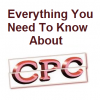There’s no way to accurately predict chance to pay-per click advertising (PPC) going into the New Year, but knowing the trends can definitely help with forecasting. This is an approach to monetizing your website that’s constantly changing, especially since Google is always coming up with new features and taking away classic favorites. For example, exact match keywords are now a think of the past, and the latest enterprise tools are making everyone scramble (again) to become expert. Whether you manage an SEO agency for drug rehab websites or you want to make a passive income blogging about cat memes, what does PPC mean for you?
In 2014, AdWords underwent a series of transformations which earned a lot of headlines, but the reality is that Google lets loose hundreds of updates throughout the year. Check out Search Engine Land for just a sampling of the AdWords updates in the past 12 months. Sometimes they come with no announcement, and sometimes they gobble up your tech newsfeed for weeks. Make sure you have the necessary information to angle yourself well for PPC in 2015.
Focus is key
Both search marketing and digital marketing need to work together in 2015 (more so than ever before). If you focus too much on testing button colors or worrying over plural vs. singular headlines, you’ll get lost in a PPC puzzle. You can probably guess that search marketing costs are through the roof, and you know organic search results are filled with ads. However, it’s easy to drown in PPC if you don’t have a plan of action in place.
You need to get through the white noise and only use the PPC tactics and tools that will yield results. Start with tracking, especially after Bing has announce Universal Event Tracking (UET) in their own search engine. This lets you track cross-device information, goals, attribution, engagement and bounce rates. It’s replacing Bing Ads Campaign Analytics, lending a hand to better tracking solutions for any Bing advertiser.
Good to know
Any Bing Ads codes for tracking made prior to July 2013 aren’t supported post-April 2015, so you have a couple of months to prepare. PPC guru Kevin Klein has blogged about how to install UET for PPC Hero, so consider that your cheat sheet. It’s supported with tag management giants like Adobe Tag manager and Google Tag Manager, so installation is made simple.
In the era of mobile expansion and massive remarketing, this new UET can be a saving grace. You’ll soon be able to add these to your remarketing efforts. At the same time, Google’s protocol for editorial review in the remarketing realm are getting tighter. It’s estimated that 95 percent of people don’t convert from one visit alone. Better opportunities for conversion to a sale from remarketing is a must for conversion rates.
Google vs. Bing
Simply put, Google Display network is stronger than Yahoo! Bing Content Network, so where should you be focusing? If you get remarketing for search (RLSA) in your arsenal, that can totally change your PPC advertising game. For the best approach, get the Bing UET tags immediately so you can test as soon as remarketing is available. However, also remember that mobile is here, with Gartner reporting $42 billion will be spend on mobile advertising by 2017.
Bing advertisers are on point with better mobile targeting (including zip code, geo location and radium), mobile products ads, new app extensions launching in 2015’s Q1 and universal event tracking as cross-device tracking. Finally, search market share is also increasing, especially after Mozilla just announce that FireFox34 has opted for Yahoo! as their default search engine, ditching Google for at least five years.
There’s more than one search engine in town, and it’s time your PPC reflected that.



